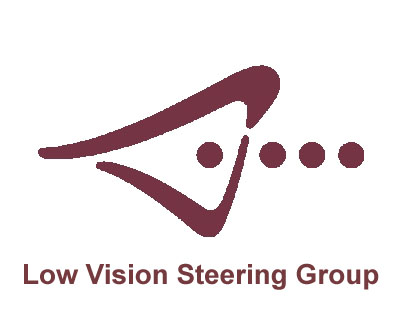Low Vision Steering Group
History
Fragmentation and poor communication
In the late 1990’s concerns had arisen in many agencies about the quality and availability of Low Vision (LV) Services. A document produced by the RNIB in 1999 'Fragmented Vision' showed that services were fragmented and there was a lack of integrated working.
These led to a Consensus group being formed to look at ways to tackle the problems. The Consensus group had, within a year of formation, written a report “Low Vision Services - Recommendations for future service delivery in the UK”.
The Low Vision Report
The first part of the report outlines a set of core standards – deciding that in order to improve services there needed to be some guidance on ‘best practice’. However the direction did not end there as the second part of the report suggested the creation of local Low Vision Services Committees (LVSCs) thus creating a mechanism for bringing people together in order to improve services.
Low Vision Services Implementation
Although the report outlined specific directions for the LVSCs, the Consensus Group recognised that without assistance it was unlikely the recommendations would be implemented.
Thus funds were raised to create a post for an Implementation Officer – supported with administration and steered by a new Implementation Group (formerly the Consensus Group).
The work initially focused on the creation of LV Services Committees with subsidiary aims of increasing multi-disciplinary working and increasing user involvement. As the work progressed various other activities have been developed to support the overall aim of improving service provision.
Some of the associated work includes:
- A regular national conference
- Circulation of a newsletter
- Presentation and training sessions
- Various documents and articles
More recently this associated work has expanded to provide more specific advice to LVSCs through the establishment of advisory groups
But has this made a difference?The Warwick University evaluation
By the time the project was due to finish in 2003 funding was found to extend the work. By 2004 a network of some 50 LVSCs extended across England. However despite the number of LVSCs it was clear that an independent evaluation was needed. This was carried out in 2004 and officially launched at Vision 2005.
Where now?
Following the publication of the Warwick Evaluation a working group was created with members coming from Vision 20 20 UK to consider the future of the work. The Group chaired by Lance Clarke (of Surrey Association for Visual Impairment) began to explore different ways of improving Low Vision Services. An expanded project was proposed.
The idea was to employ 3 or 4 people to be responsible for LVSCs in smaller regional areas. In addition these Officers would then be able to advise on specific areas of interest– such as Learning Disabilities and Children/ Young People.
In order to pursue these aims the working group became established as the Low Vision Steering Group and funding was sought from the Big Lottery and other sources. Although, as of summer 2007, these sources have not yet proved successful and funding is still being sought.
In addition to the Steering Group a Low Vision Consultative Forum was established enabling members of the Low Vision Implementation Group to play an advisory role. However convening this group proved difficult and so the group was disbanded.
The Steering group has continued to seek to improve low vision services and has developed work plans and reviewed its activities. In late 2006 Chris Leese joined the RNIB and was able to assist the LVSG and the Implementation Officer in providing specific support on Primary Care Trust (PCT) and other related matters.
Feedback from the Department of Health Low vision pilots and the publication of new guidance on Low Vision Standards have contributed to discussions.
The work has also benefited from the publication of further RNIB and the AMD Alliance UK research on Low Vision Services in the UK. "A question of Independence" was published in 2007.

